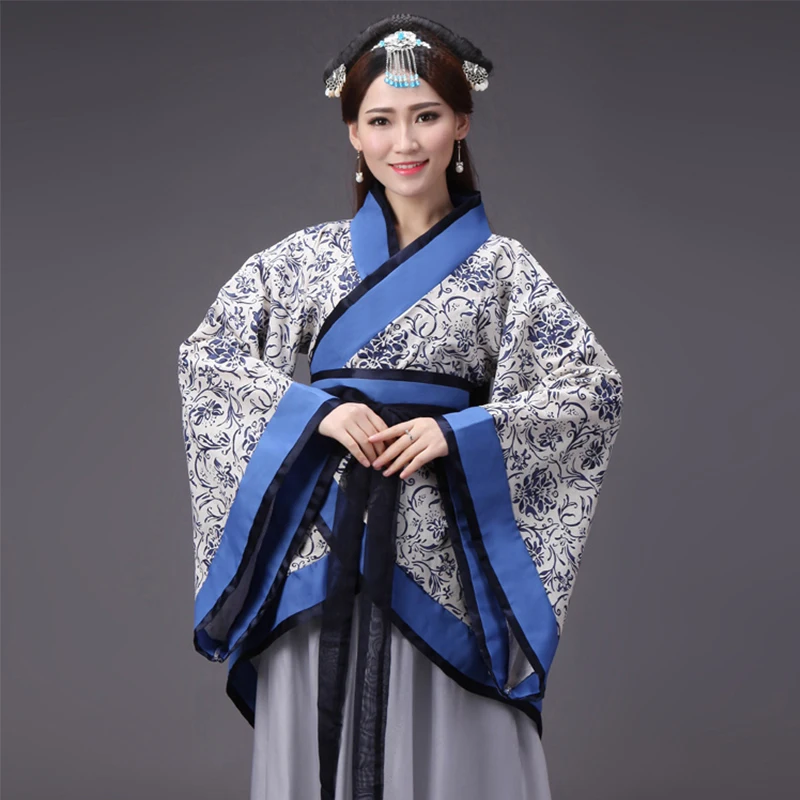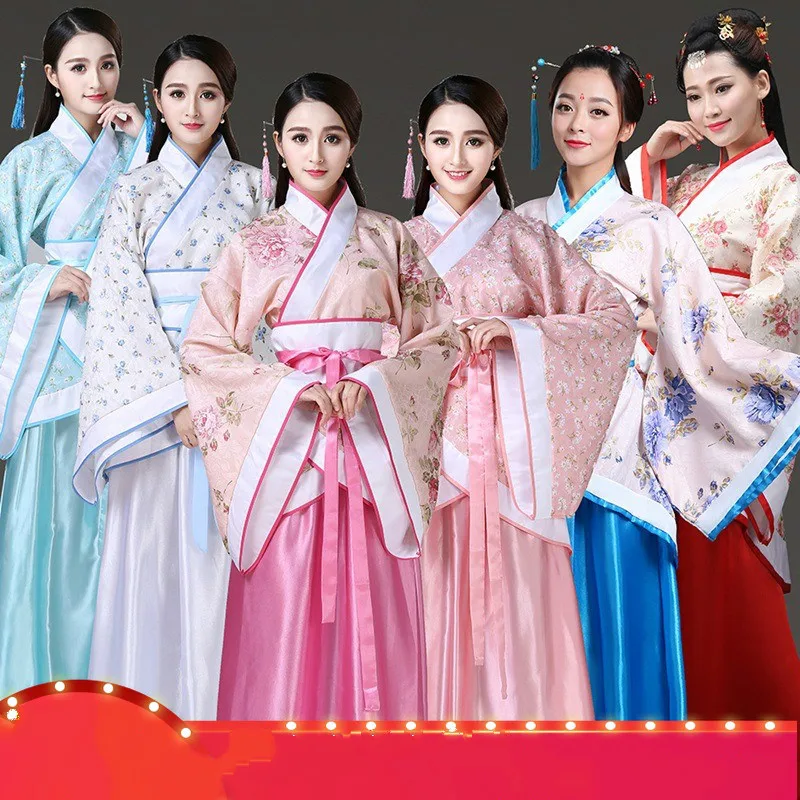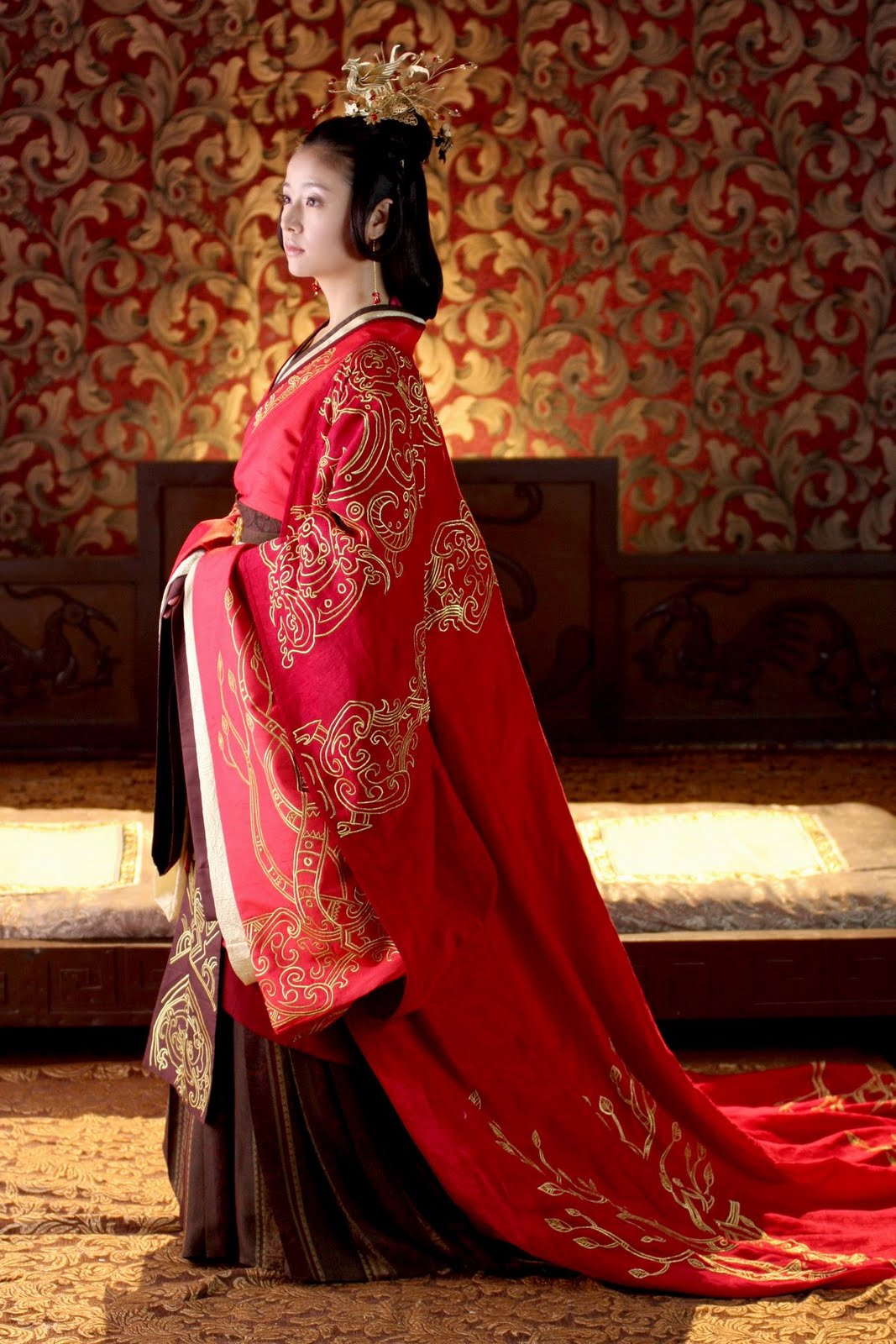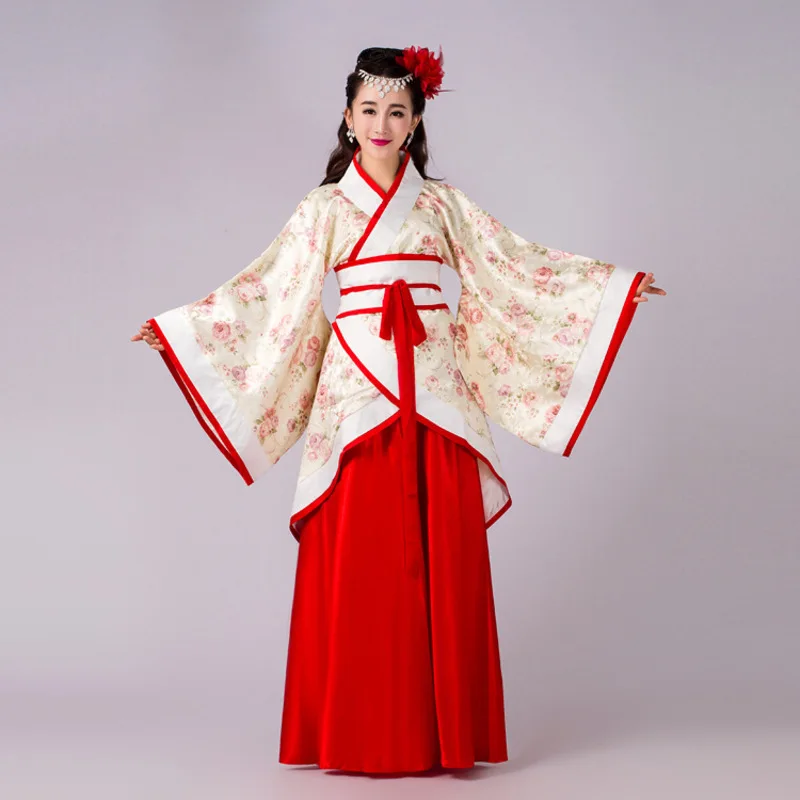Chinese Folk Dance Dress Ancient costume, Tang costume, Han costume, imperial concubine dress

Traditional Chinese Clothing Female Dragon Chinese Traditional Emperor Costume Ancient Queen
Chinese clothing and status Just like in Ancient Rome, people wore very different clothes depending on whether they were rich or poor. Clothes told people about your status (your position in society). The biggest difference between rich and poor people in China was that only rich people were allowed to wear silk.

ancient chinese costume women clothing clothes robes traditional beautiful dance costumes han fu
Hanfu comprises all traditional clothing classifications of the Han Chinese with a recorded history of more than three millennia. [15] [16] Each succeeding dynasty produced their own distinctive dress codes, reflecting the socio-cultural environment of the times.

The Art Reference Blog Chinese clothing, China clothes, Traditional fashion
Now aged 19 and living in Beijing, Zhang is a member of China's growing "Hanfu" movement - a renaissance of the ancient clothing traditionally worn by ethnic-majority Han Chinese before.

Chinese Folk Dance Dress Ancient costume, Tang costume, Han costume, imperial concubine dress
This ancient Chinese clothing has quite a legendary origin whose roots can be traced back more than 4,000 years, when Leizu, the great sage Yellow Emperor's (2598 - 2698 BC) consort made clothes with silk. When western Zhou Dynasty began, Han Fu became to be the method of distinction among social classes. The level of decoration of a dress.

Buy ancient chinese costume women clothing clothes robes traditional beautiful
Chinese clothing includes the traditional hanfu and garments of ethnic minorities, as well as modern variations of indigenous Chinese dresses. Chinese clothing has been shaped through its dynastic traditions, as well as through foreign influences. [1]

Ancient Traditional Chinese Woman Elegant Hanfu Dress Fashion Hanfu
Traditional Chinese Clothing and Accessories. Traditional Chinese dress was not concerned with the form of the human body, but with the surface of the fabric itself. Most garments for both men and women were loose fitting and simply constructed, but were richly ornamented with embroidered, woven or appliquéd designs. Dragon robe (c. 1800.

Chinese Traditional Costume Clothing Costume Hanfu Female Women Lady Han Costume Princess The
Hanfu appeared in China more than three thousand years ago and is said that it was clothing of the legendary Yellow Emperor, a great sage king of ancient China. The basic of Hanfu was developed in time of Shang Dynasty, from 1600BC to 1000BC. Hanfu consisted of a yi, a narrow-cuffed, knee-length tunic tied with a sash, and a narrow, ankle.

chihaha Han Chinese clothing
Popular fashion in ancient China was defined by a number of notable aesthetic traditions. The Tang dynasty (CE 618-907) and Song dynasty (CE 960-1279) are the primary periods in which ancient China refers.

Traditional Ancient chinese costume woman tang dynasty dress fairy hanfu cosplay eBay
Clothing manufacture in China dates back to prehistoric times, at least 7,000 years ago. Archaeological findings of 18,000 year-old artifacts such as bone sewing needles and stone beads and shells with holes bored in them attest to the existence of ornamentation and of sewing extremely early in Chinese civilization.

Emperor Hanfu Dress Ancient Chinese Traditional Costume Men For Kids Boys Hanfu Cosplay Child
Bibliography and further reading about ancient Chinese clothing: China and Japan (Cultures and Costumes), by Paula Hammond (2003). For teens. Moonbeams, Dumplings & Dragon Boats: A Treasury of Chinese Holiday Tales, Activities & Recipes, by Nina Simonds and others (Children's Museum of Boston, 2002).

2017 Autumn Ancient Chinese Costume Women Clothes Robes Traditional Hanfu Dance Costumes
The Han (汉族 hànzú) are the dominant ethnic group in China, and consequently Chinese characters are referred to as Han characters (汉字 hànzì). Likewise, the Mandarin language is called the Han language (汉语 hànyǔ) and traditional Chinese clothing is called Han clothing (汉服 hànfú). During the Han dynasty, clothing designs.

Chinese Traditional Costume Clothing Costume Hanfu Female Women Lady Han Costume Princess
Fashion of Ancient Chinese Evolvement of Ancient Chinese Attire and Adornment By Shanghai Guanfu Museum Embroidered cyan satin wimen's robe, Pao Shanghai Guanfu Museum This garment employed.

Ancient Traditional Chinese Woman Elegant Hanfu Dress Fashion Hanfu
Ancient Chinese Culture: Costume and Adornment Date: Opening on February 6, 2021 Venue: Gallery N18 Host by: National Museum of China Clothing is more than just a daily necessity, serving the practical functions of beating the cold and heat, resisting the wind and rain, protecting the body and covering our shame.

Chinese traditional clothing sets ancient Chinese folk dance hanfu oriental women's fairy
Abstract. Clothing, food, housing, and transport are basic necessities of life for human beings in any time at any places. By guaranteeing such basic needs, textile technology has become one of the most important components in our technological history. Textile technology occupies an important position in Chinese history of science and.

Ancient marriage costume the bride clothing gown traditional Chinese wedding dress womens
So, without further ado, here is a list of the top 10 traditional pieces of ancient Chinese clothing: Contents show The ancient Chinese wore tunics like long- and short-sleeved robes with or without belts. Women mostly wore long tunics with a belt that touched the ground and men wore shorter ones that touched their knees.

Pin by Yin on Miso Ancient china clothing, Chinese clothing, Chinese historical fashion
Introduction. China's Tang Dynasty (618-907 AD) is considered a high point in Chinese history. Women's clothing of this period went on to influence Japanese and Korean dress, as well as our modern concept of traditional Chinese clothing. The country was open to the outside world, tolerant and appreciative of different cultures (Mei 2011.